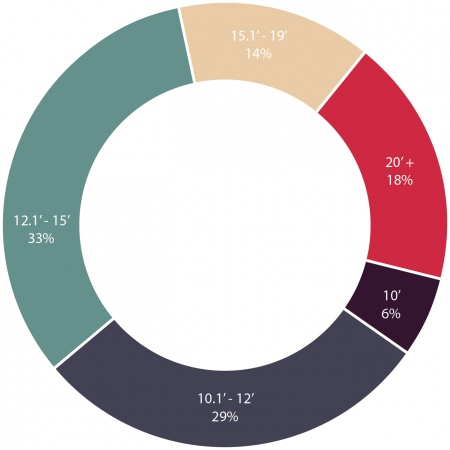Today, a Jeff Speck article published on CityLab shares an excellent argument for narrower travel lanes.
When lanes are built too wide, many bad things happen. In a sentence: pedestrians are forced to walk further across streets on which cars are moving too fast and bikes don’t fit.
Last year, we shared our study of street design features that included travel lane measurements for 49 main streets in Oklahoma. The chart to the right shows the breakdown of lane widths on these 49 urban main streets.
Only 6% of the streets in the survey are compatible with Speck’s recommendation for 10′ lanes. Only 1/3 of the streets had lanes of 12′ or less. Reconsidering lane width on urban streets provides a great opportunity for street design in Oklahoma.
In an example Speck provides, a lane diet in Florida provides the following results:
What would happen if these lanes were reduced to 10-feet wide, as proposed? Three things. First, cars would drive more cautiously. Second, there would be roughly eight feet available on each side of the street for creating protected cycle lanes, buffered by solid curbs. Third, the presence of these bike lanes would make the sidewalks safer to walk along. All in all, an easy, relatively inexpensive win-win-win that DOT could fund tomorrow.
Read more:
Lane Width on 49 Oklahoma Main Streets

